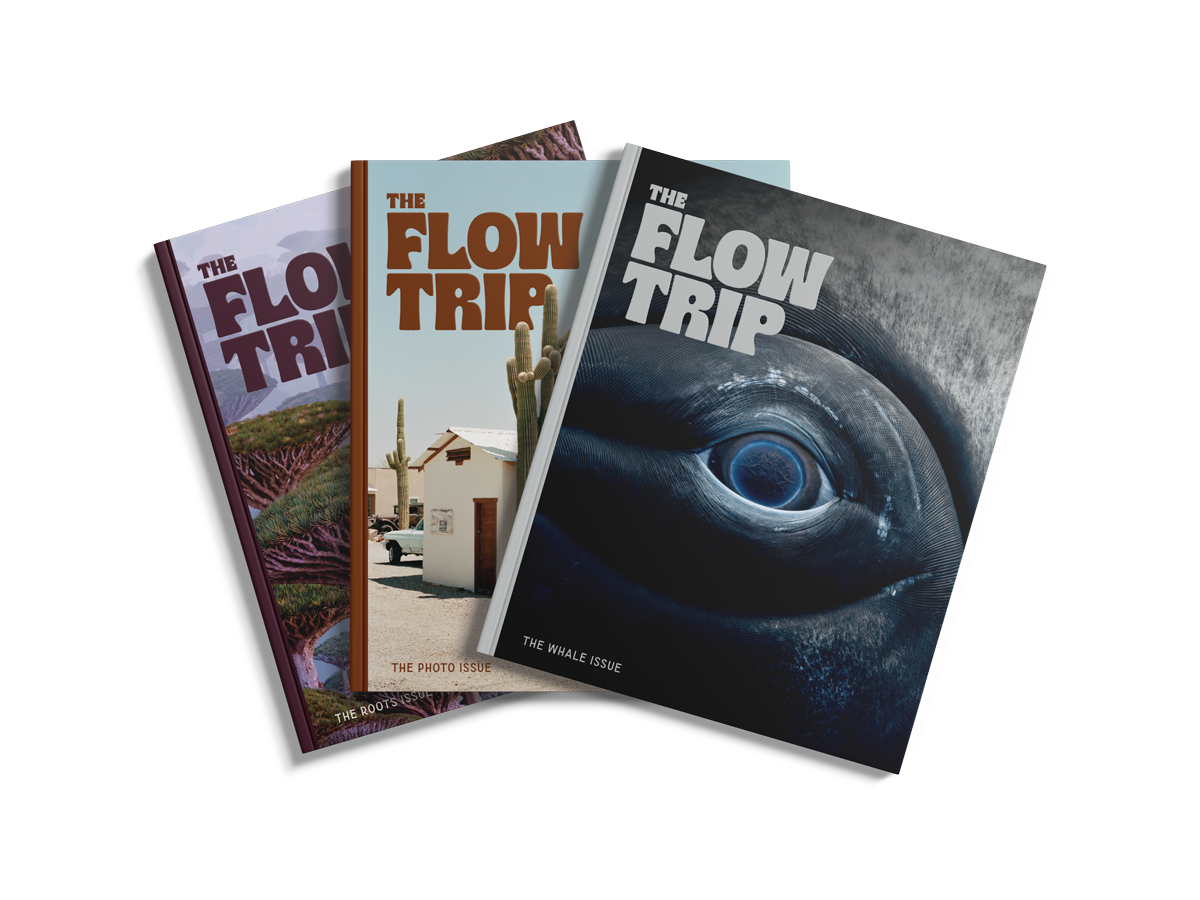The Spiritual Spectrum of Nature
The Flow TripInterconnectedness with nature is a powerful thing. And although most of us live in a world where we might not feel as in touch with nature as we would like, we find pause when we make it to the beach, take a hike, or even stand in the grass without shoes on. But some cultures, many being Indigenous, find their roots deeply entangled in nature, where it is a daily practice to live in harmony with the wilderness, the surrounding land, and all its inhabitants. We were fortunate enough to speak with a few good humans from various Indigenous cultures to get their take on the importance of being connected to nature. The relationship the humans below seem to agree on is a balance of give and take.

Gilberto Alemancia | The Kuna People | Panama
Originally from the Kuna Yala region, Gilberto Alemancia is the founder and CEO of the Indigenous Tourism Network of Panama, an NGO dedicated to developing Indigenous tourism and entrepreneurship in Panama. He also participates in legislative initiatives surrounding Indigenous and sustainable tourism, practices, and development.
Explain your culture’s beliefs about nature/the land.
We Kunas believe a lot in nature or our Mother Earth, which we call Nabguana in our language. It is like a mother, which is why it is important to respect it and take care of it. We believe that there is a strong relationship between nature and our culture because we depend on it — it gives us medicine and food, so it is important to respect it.
What are a few easy ways for someone to reconnect with nature?
The simplest way to reconnect with nature would be to first know how to appreciate nature, leave material things behind for a bit, and learn from some Indigenous people about their worldview towards nature.
What aspect of nature is the most sacred to your culture?
Almost all aspects of nature in my Kuna culture are sacred, which is why our ancestors have to ask permission before working in the mountains. Because for us, they are all like human beings, and all the trees, the flora and fauna, deserve respect.

Martison Siritoitet | Suku Mentawai | Indonesia
Martison Siritoitet is an emerging young leader from the Mentawai Islands who has been serving as the media and communications manager at the Yayasan Pendidikan Budaya Mentawai, or the Suku Mentawai Cultural Education Foundation, since 2018. From creating award-winning documentaries about the Mentawai to assisting the Suku Mentawai Foundation in developing an ecotourism program, he is passionate about supporting Indigenous-led cultural education.
Explain Suku Mentawai beliefs about nature/the land.
Arat Sabulungan is a profoundly spiritual belief system that illustrates the harmonious relationship between humans and the universe. Its core concept is that everything in this world possesses a spirit, including plants, animals, and even inanimate objects. The importance of maintaining a balance between nature and humanity is evident in the way the Mentawai people care for their environment with great respect and caution. This belief teaches that every human action toward nature must be ethical and spiritual, as nature is regarded as a sacred space inhabited by the spirits that give life.
What are a few easy ways for someone to reconnect with nature?
One can start by respecting and maintaining the balance of nature in everyday life. This can be done by not damaging the environment, using natural resources wisely, and reducing waste and pollution. Simple activities like gardening, planting trees, or walking in nature can help someone feel at peace and appreciate the natural world. Another is by understanding and practicing the values taught in traditional beliefs, such as those found in Arat Sabulungan.
What aspect of nature is the most sacred to Suku Mentawai?
The most sacred aspect of nature is the forest, which is considered the dwelling place of ancestral spirits and the spirits of nature, and it holds a significant and revered position in the belief system of Arat Sabulungan. The forest is not only a natural resource but a sacred space that must be protected and preserved. The lives of the Mentawai people are deeply connected to the forest, as it serves as a home, a source of food, and a place to perform various spiritual rituals.
Tara Atleo, haḥuuła | Ahousaht First Nation | Canada
Tara Atleo, haḥuuła, from the Ahousaht (ʕaḥuusʔatḥ) First Nation, house of ƛaqišpiił on the west coast of Vancouver Island in Canada, is an Indigenous sustainable development practitioner and stewardship economics researcher. Her work focuses on how Indigenous stewardship practices contribute economically, environmentally, culturally, and socially, reinforcing their role in sustainable development and resource management. This holistic approach empowers Indigenous communities to see themselves and their values reflected in economic frameworks, supporting reconciliation, well-being, and long-term prosperity while informing trade-offs in development decisions.
Explain Ahousaht First Nation’s beliefs about nature/the land.
A foundational teaching within ʕaḥuusʔatḥ is hišuukiš caw̓ak, which is often translated as “everything is one” or “everything is interconnected.” However, this translation does not fully capture its meaning. Hišuukiš caw̓ak reflects the deep connections between people, the land, waters, and all living beings, emphasizing that our well-being is inseparable from that of our territories. This teaching guides ʕaḥuusʔatḥ governance, law, and stewardship practices, ensuring that our ways of caring for the land and waters uphold balance, respect, and reciprocity for future generations.
What are a few easy ways for someone to reconnect with nature?
Everyone has their own unique way of connecting with nature, shaped by their personal needs, experiences, and beliefs. The most important step is simply taking the time: Slow down, notice, and rebuild your relationship with the natural world around you.
It’s also important to recognize that nature isn’t just one thing. It’s diverse, ever-present, and found even in unexpected places. You don’t have to plunge into the ocean or disappear into the forest to feel connected. Reconnecting can be a mindset.
What aspect of nature is the most sacred to the Ahousaht First Nation?
Being one with nature and the territories means that there is no single element more sacred than another. Everything is connected, and each part holds its significance. Sacredness within ʕaḥuusʔatḥ comes from relationship, reciprocity, and stewardship, which we uphold by living through our guiding principles: ʔiisaakst̓ał, respecting one another; haaḥuupst̓ał, teaching one another; yaʔakst̓ał, caring for one another; and hupiiłst̓ał, helping one another. These principles are foundational to ʕaḥuusʔatḥ law and governance, shaping how we interact with the world and our responsibilities within it.
Legacies in Depth
The Flow TripWhat the Water Gave Me
The Flow TripSubscribe to The Flow Trip
- Choosing a selection results in a full page refresh.
- Opens in a new window.




